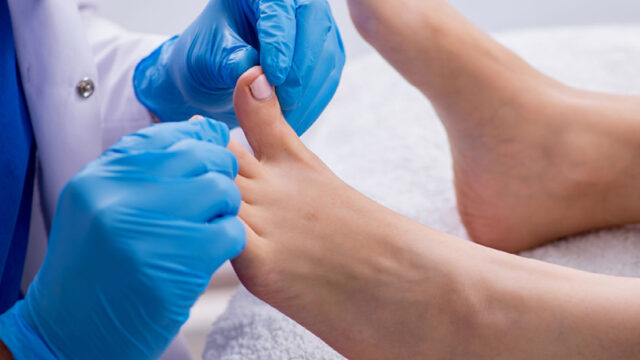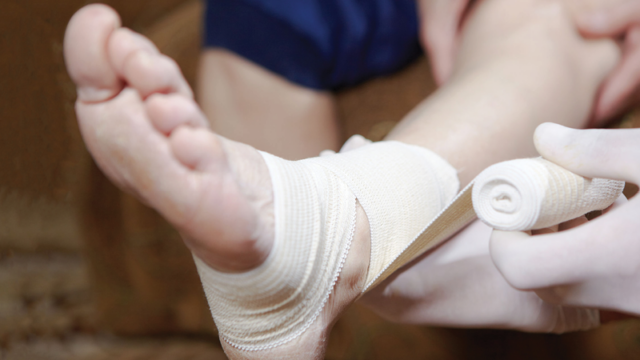Understanding Diabetes and Foot Ulcers

Diabetes affects millions of people worldwide and can lead to serious complications when not properly managed. One of the most concerning complications is the development of diabetic foot ulcers – open sores that commonly occur on the feet and can lead to severe infections or even amputation if left untreated. Understanding both diabetes and its foot-related complications is essential for prevention and proper care.
At Healogics, we specialize in treating diabetic foot ulcers with advanced wound care techniques. This comprehensive guide will help you understand the fundamentals of diabetes, proper management, and how to prevent and treat diabetic foot ulcers.
What are the Risk Factors for Diabetes?
Several factors increase your risk of developing diabetes. Type 1 diabetes is primarily caused by genetic factors and autoimmune responses, while type 2 diabetes risk factors include being overweight or obese, having a family history of diabetes, being physically inactive, and being over age 45. Certain ethnic groups, including African Americans, Hispanic Americans, and Native Americans, have higher diabetes rates.
Additional risk factors include having prediabetes, gestational diabetes during pregnancy, high blood pressure, and abnormal cholesterol levels. Understanding these risk factors helps with early detection and prevention strategies.
Diabetes Outlook and Management
Diabetes is a chronic condition requiring ongoing medical attention, but with proper care, people with diabetes can live full, healthy lives. The key to preventing complications, such as foot ulcers, lies in maintaining good blood sugar control and working closely with your healthcare team.
When poorly controlled, diabetes damages nerves (diabetic neuropathy) and impairs circulation, particularly in the feet. This combination of reduced sensation and poor blood flow creates ideal conditions for foot ulcers to develop unnoticed and heal slowly, which is why vigilant foot care is essential for people with diabetes
Diabetes Treatment and Blood Sugar Management
Effective diabetes management involves multiple strategies working together to keep blood sugar levels within the target range. The foundation includes regular blood sugar monitoring, following a balanced meal plan, engaging in regular physical activity, and taking prescribed medications as directed. Weight management and exercise are particularly important as they improve insulin sensitivity and glucose control.
Medication management may include insulin injections, oral medications, or newer drugs that help your kidneys remove excess glucose. Regular monitoring helps you and your healthcare team understand how well your treatment plan is working and when adjustments are needed to prevent complications like foot ulcers.
Diabetes Diagnosis and Testing
Diagnosing diabetes involves blood tests that measure your blood sugar levels over different time periods. Common tests include the fasting plasma glucose test (performed after fasting for 8 hours) and the hemoglobin A1c test (which measures average blood sugar levels over 2-3 months). Your healthcare provider will also conduct a comprehensive medical history and physical examination.
Once diagnosed, additional tests are used to assess your overall health and screen for potential complications. This includes checking your feet for nerve damage or circulation problems, as well as eye exams and kidney function tests. Regular A1C testing every 3-6 months and annual comprehensive exams help monitor your diabetes management and catch complications early.
About Diabetic Ulcers
A diabetic ulcer is a wound that occurs on the feet, heel, or toes of people with diabetes. Many times, there is little to no feeling in the feet or in the ulcer itself. A pulse is present, and the skin is normal or warm to the touch. The skin on the legs and feet may be dry and flaky.
You may have an ulcer that has not started to heal in two weeks. It may not completely heal in six weeks. Your ulcer might need special care.
What are the Signs and Symptoms of a Diabetic Foot Ulcer?
Recognizing the early signs of a diabetic foot ulcer is crucial for preventing serious complications. One of the most common indicators is drainage from your foot that might stain your socks or leak out in your shoe, often accompanied by an unusual odor from one or both feet. You may notice unusual swelling, irritation, or redness around a particular area of your foot.
As the condition progresses, you may observe black tissue, known as eschar, surrounding the ulcer site. This dead tissue is a sign that the wound needs immediate professional attention. It’s important to remember that due to nerve damage from diabetes, you might not feel pain from the ulcer, which is why daily visual inspections are so critical for people with diabetes.
Types of Diabetic Foot Ulcers
There are three main types of diabetic foot ulcers:
- Neuropathic ulcers: These are the most common type and are caused by nerve damage. They usually occur on the bottom of the feet.
- Ischemic ulcers: These are caused by poor blood flow and are often found on the heels or toes.
- Neuroischemic ulcers: These are a combination of neuropathic and ischemic ulcers
When to Seek Immediate Medical Care
You should seek immediate medical care if you experience any of the following:
- A fever or chills with a foot wound
- Red streaks extending from the ulcer
- Increased firmness, swelling, or tenderness around the ulcer
- A deep ulcer that you can see bone in
Advanced Treatment Options for Diabetic Foot Ulcers
When standard wound care isn’t sufficient, Healogics-managed wound care centers offer a range of advanced treatment options through specialized expertise and technologies.
- Hyperbaric Oxygen Therapy (HBO): This treatment involves breathing pure oxygen in a pressurized chamber, which can help increase oxygen delivery to the wound site and promote healing.
- Negative Pressure Wound Therapy (NPWT): Also known as vacuum-assisted closure, this therapy uses controlled suction to remove fluid from the wound and promote tissue growth.
- Bioengineered Skin Substitutes: These are laboratory-grown tissues that can be applied to wounds to promote healing when the body’s natural healing process isn’t sufficient.
- Growth Factor Therapy: Specialized medications that contain proteins naturally found in the body can be applied to stimulate cell growth and healing.
- Debridement: The surgical removal of dead, damaged, or infected tissue to promote healthy tissue growth.
Take Action: Your Path to Healing Begins Here
Managing diabetes and preventing diabetic foot ulcers requires expert care, early intervention, and a comprehensive treatment approach. While this guide provides valuable information about diabetes and foot ulcer prevention, nothing replaces personalized medical care from specialists who understand the complexities of diabetic wound healing.
At Healogics, we’re the nation’s leading provider of advanced wound care, with over 600 centers nationwide specializing in diabetic foot ulcer treatment. Our multidisciplinary team uses the latest evidence-based treatments, including hyperbaric oxygen therapy, advanced wound dressings, and cutting-edge healing technologies. Don’t wait for a small problem to become a serious complication – early intervention is key to successful healing and preventing amputation.
Ready to take the next step in your diabetes and foot care journey? Contact Healogics today to schedule your consultation. Our wound care specialists are here to help you heal faster and prevent future complications.



